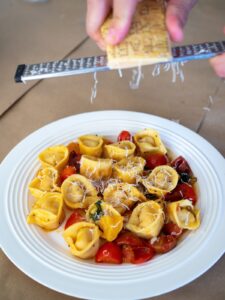Last Updated on November 8, 2025 by Emma Fajcz | Published: April 25, 2023
There are some Italian meats that need almost no introduction (lookin’ at you, prosciutto), but there’s so much more variety available for an antipasto plate in Italy and elsewhere—and not even prosciutto has a backstory that includes both Sofia Loren and a catchy 1970s US television jingle.
That colorful tale belongs only to mortadella, the pride of Bologna.
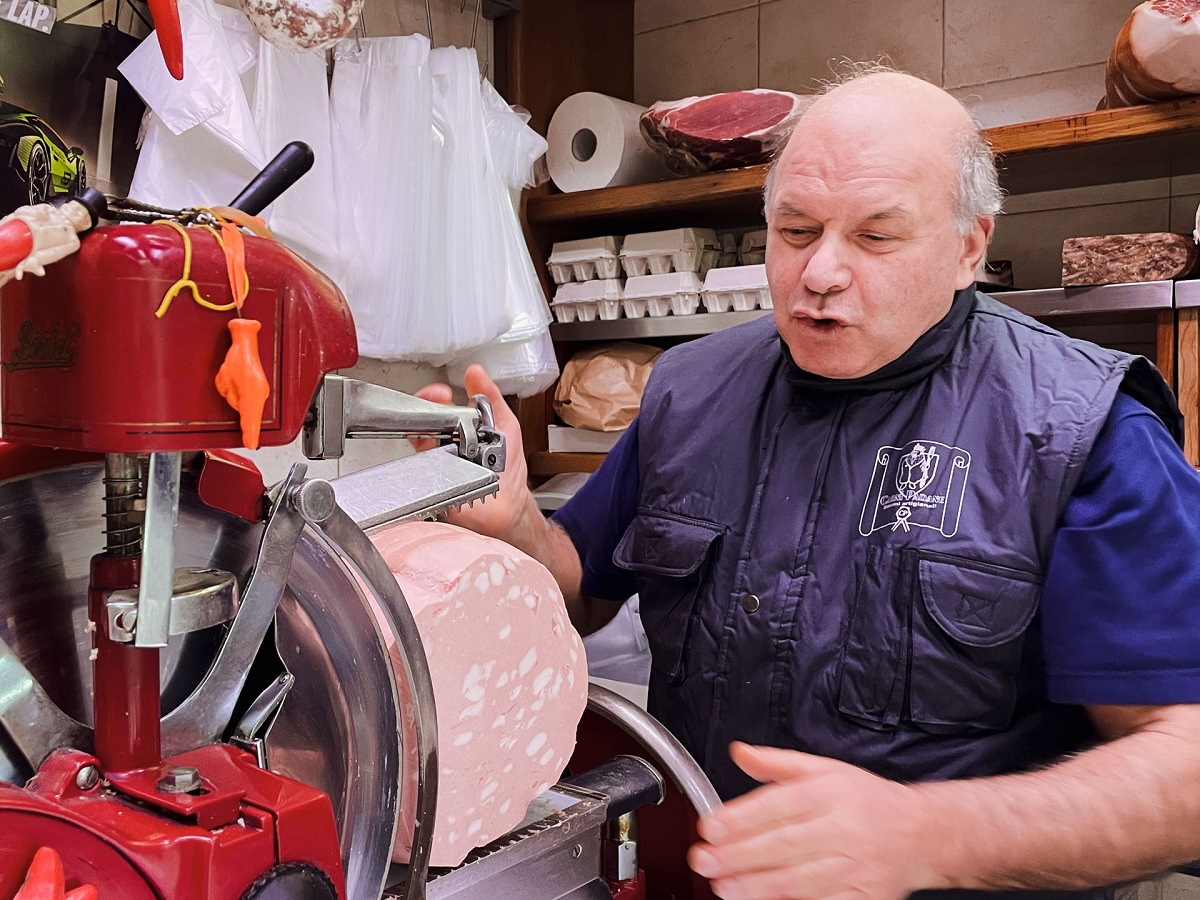
How is mortadella made?
Mortadella is a type of Italian sausage, originally a combination of finely ground cured pork with spices and small bits of pork fat. The mixture is pushed into sausage casings and then cooked, very slowly, for as long as 24 hours.
Like its meaty Italian cousin, prosciutto, mortadella is made differently in different parts of Italy with varying spices and – in some cases – meats. In Prato, for instance, mortadella is made with copious amounts of garlic, while a mountain town in the Lazio region makes a smoked version. Another Lazio area makes their mortadella with horsemeat.
The most familiar mortadella, though, especially outside Italy, is Mortadella di Bologna. It’s where the first version of the sausage was born, and it even has protected status under EU law. Only products made in designated areas and following specific recipe guidelines can add “di Bologna” to the label.
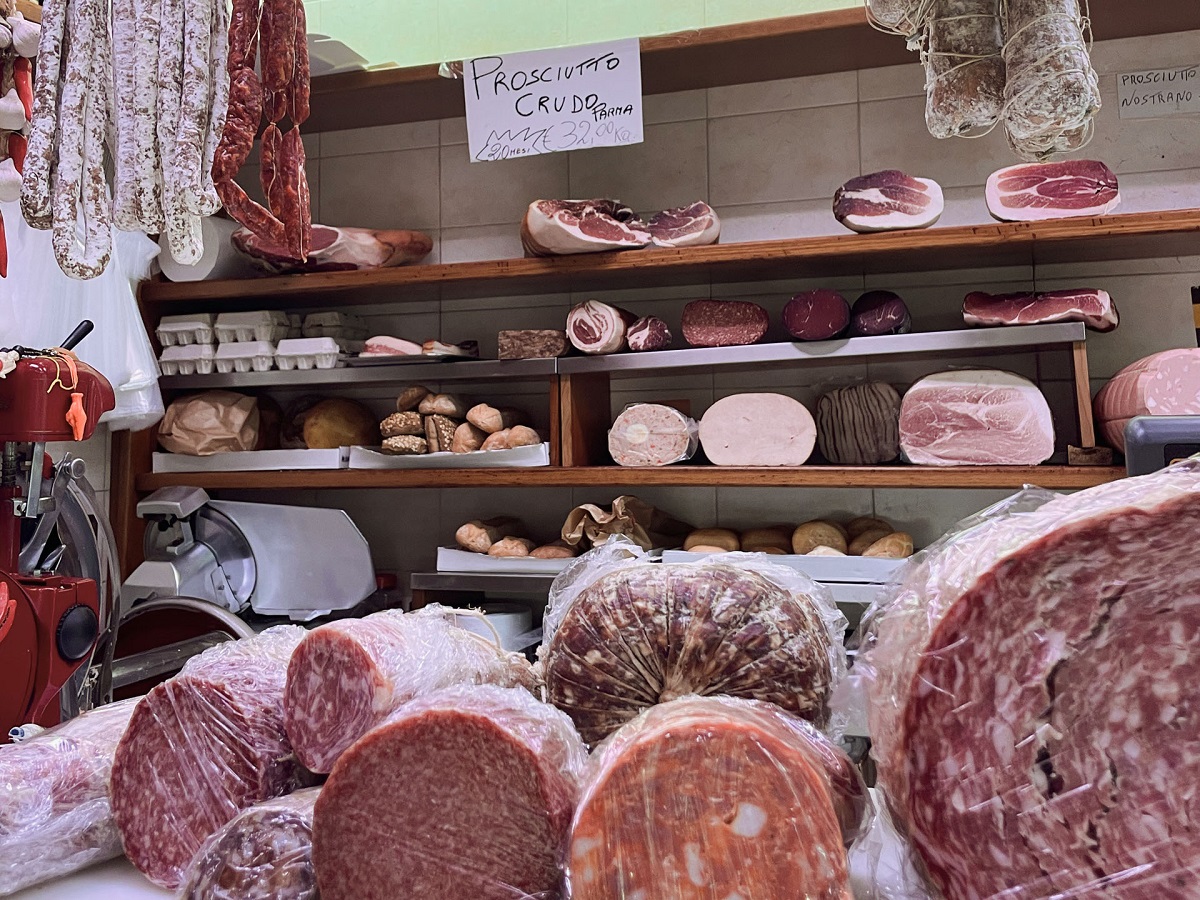
In Bologna, mortadella has been made with 100% pork for centuries. It’s typically studded with bits of black peppercorns (which have largely replaced the likely original ingredient, myrtle berries) and may also have pistachios. The additions can change a bit, but certain aspects of Mortadella di Bologna’s recipe and production are regulated by law. This includes the pork fat content, which must constitute at least 15% of the sausage to be called mortadella. When you look at a mortadella slice, you should see evenly distributed spots of white fat.
The colorful history of mortadella
Mortadella has been around for a lot longer than you might expect.
There are two Ancient Roman carvings in Bologna’s Archaeological Museum depicting pigs and a mortar and pestle, which is how mortadella was traditionally made, that make scholars think butchers were making something akin to mortadella in the Imperial Roman era. What’s more, Roman writer and philosopher, Pliny the Elder, wrote of how much Emperor Augustus loved the particular sausage he ate in Bologna. (Ties to Ancient Rome bolster one etymological theory, too, that says “mortadella” comes from the Latin word for mortar: mortarium.)
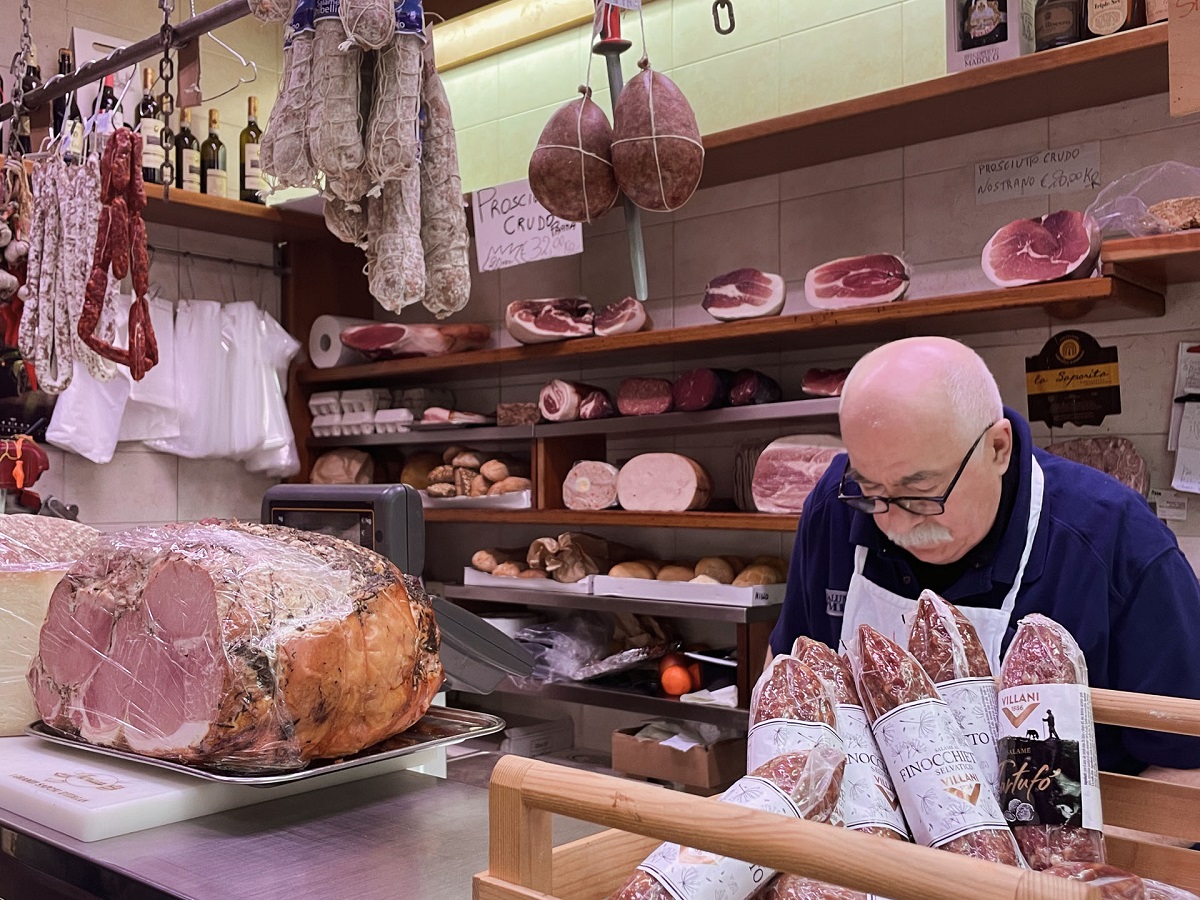
Bologna’s meaty claim to fame
Mortadella (or something like it) pops up in the late 14th century, too, in connection with a guild of meat preservers in Bologna. There’s a description of a sausage that sounds very much like the mortadella we know today, and in 1376 one version of this guild’s coat of arms supposedly featured a mortar and pestle. You can tip your hat to the original location of the guild, L’Arte dei Salaroli, marked by a plaque at Vicolo Ranocchi number 6 in Bologna’s Quadrilatero.
Mortadella’s rise to luxury status – counterfeits included!
It wasn’t until 1661, however, that mortadella recipe and production standards were outlined in writing by Cardinal Girolamo Farnese. His official notice established that in order to call it “mortadella,” it had to be made with 100% pork (no other meat) and it had to have the Salaroli guild’s seal of approval. They even made it illegal to produce “counterfeit” mortadella, with fines and torture listed as potential penalties for violators.
Once the Cardinal’s notice went into effect, the price of authentic mortadella started to climb, largely due to the copious spices used in the recipe—in some cases, it was even more costly than prosciutto. By the early 1800s, mortadella was such a luxury item it was only found on tables of the wealthy and nobility. It was only with the advent of more modern production methods that the prices dropped and mortadella as we know it today became affordable to nearly everyone.
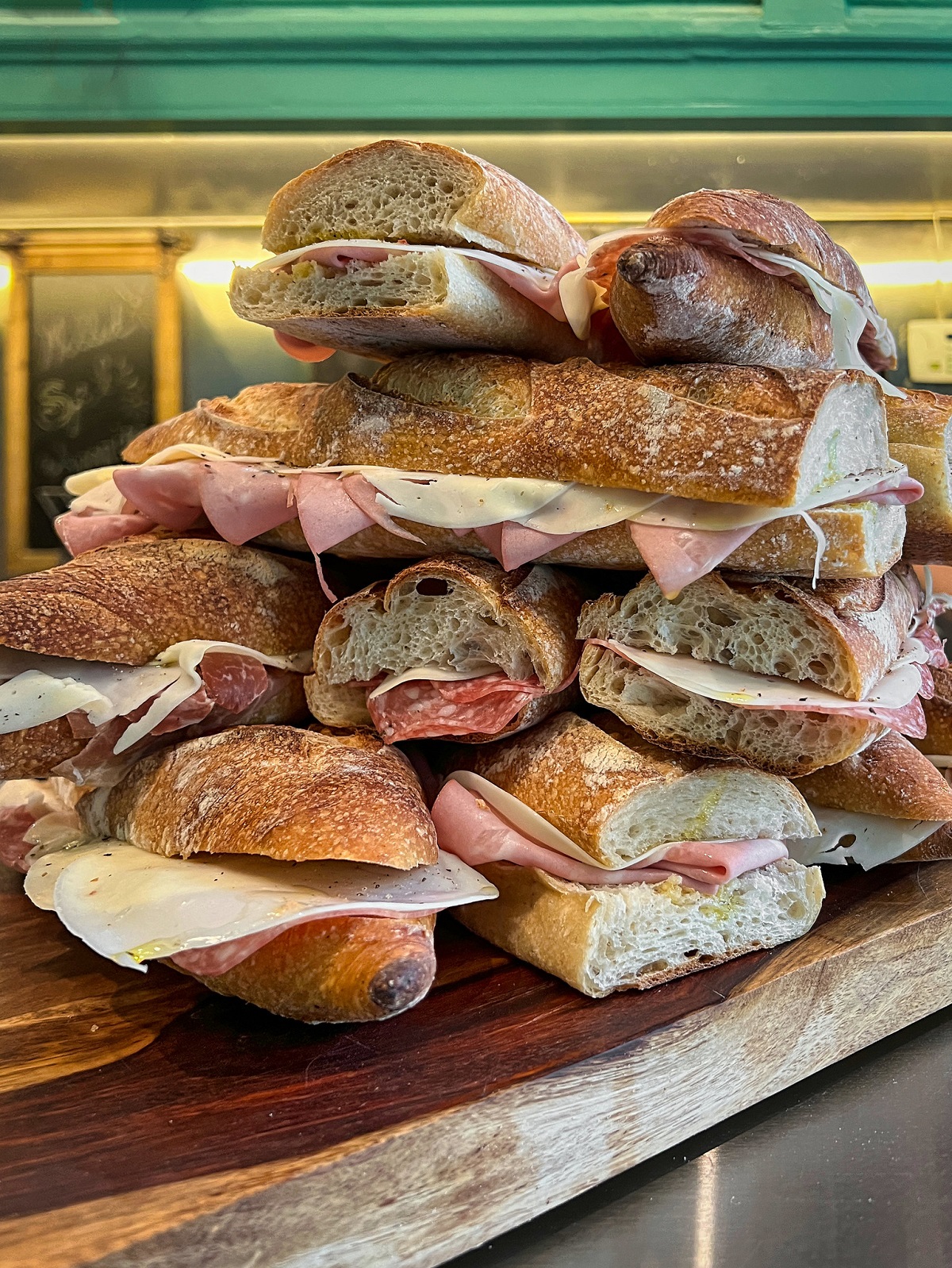
Italian dishes with mortadella
Italians frequently include bite-sized cubes of mortadella as part of an antipasto spread or slice (extremely thinly) it for use in sandwiches. They also cook with mortadella, adding chunks to a bolognese sauce or frying small pieces to make them crispy before serving. Lambrusco wines, which also come from Emilia-Romagna, are a popular pairing with mortadella.
A Bolognese specialty is mortadella that’s been whipped with soft cheese, herbs, and spices into a mousse—spuma di Mortadella. Another regional specialty comes from the Romagna side of Emilia-Romagna and is commonly found in Bologna: a piadina with thinly sliced mortadella. Piadina is a round, flat bread (a bit like a thick, rustic tortilla) that’s usually folded in half, filled with sandwich fixings, and grilled or fried. It’s a popular snack or light lunch.
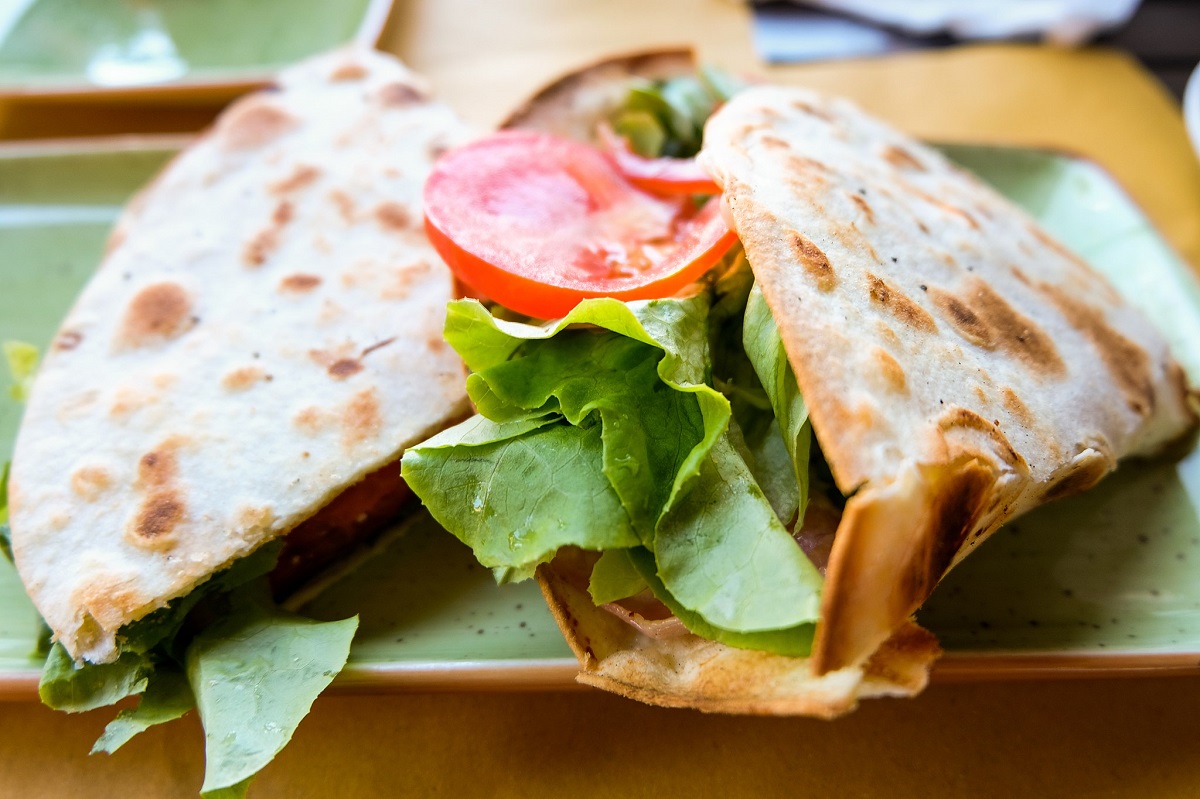
What’s the difference between bologna and mortadella?
The bologna you’ll find in many grocery stores these days may have descended from mortadella, but it’s a far cry from its origins.
History is a bit fuzzy on how we got from mortadella that’s a delicacy to the stuff we call “bologna” or “bologna sausage” today, but some credit German immigrants with bringing mortadella to the United States—it was, after all, well-known and well-loved throughout Europe by the mid-19th century. And, thanks to novel canning methods at the time, it traveled well. It came to be known by the name of mortadella’s origin city, but since producers in the US weren’t bound by EU regulations, bologna sausage became its own meat with very little relationship to its ancestor.
Mass-production techniques in early 20th-century North America made bologna (usually pronounced “baloney”) even more affordable. It was common in school children’s lunch boxes around the US, and it became an even more important staple during the Great Depression.
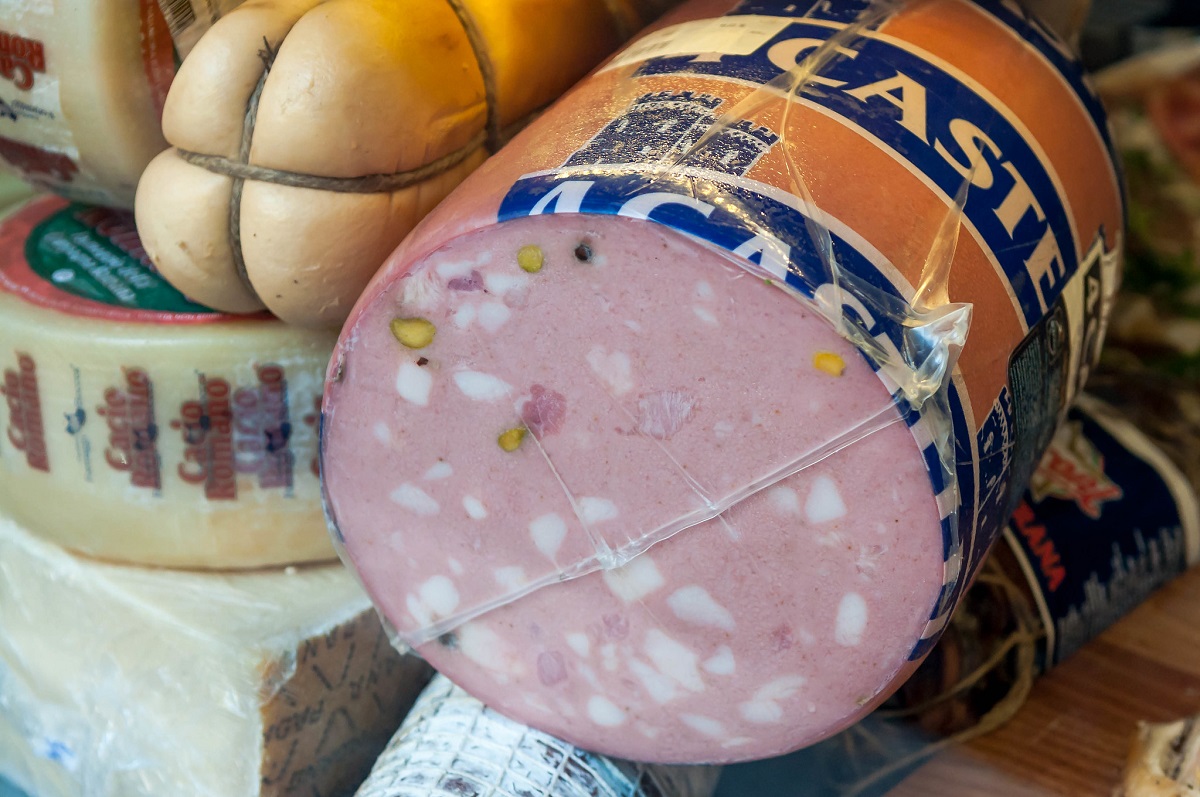
Pistachio-flecked mortadella is incredibly different from Oscar Meyer lunchmeat. Photo credit: Marco Verch
Bologna in pop culture
There was a long period (1967-2000) when importation of true mortadella into the United States was prohibited because of African swine fever in Italy, which helped make bologna sausage the de facto version of its Italian ancestor. There’s even a 1971 Italian film called, “La Mortadella,” in which Sofia Loren plays a woman trying to smuggle mortadella into the US.
What does mortadella taste like?
Mortadella’s flavors can vary quite a bit, depending on where it’s from, but the spices used in Mortadella di Bologna should be well-balanced with the flavor of the pork itself without dominating it. Some even call it slightly sweet.
The texture is as important to overall quality as the flavor. Mortadella should be soft and smooth, thanks to the fat content and slow method of cooking. This is sausage that could very well feel like it’s melting in your mouth.
Many locals enjoy pairing Moradella with pizza – watch this video to see how this combo works (found in section “Is pizza e mortadella the best?”)
Phony baloney?
Bologna sausage doesn’t have recipe standards like mortadella does, and may include a number of different meats. (There are even some vegetarian bologna options made with soy protein now.) It doesn’t have the silky mouthfeel that’s so beloved in mortadella, nor does it have that subtle blend of spices. What you taste in bologna sausage is mostly salt, and the texture of bologna leans a bit more toward the chewy end of the spectrum. What’s more, both the fat and spices are completely blended into the meat—you’ll find no pieces of fat, peppercorns, or pistachios in a slice of Oscar Meyer “baloney.”
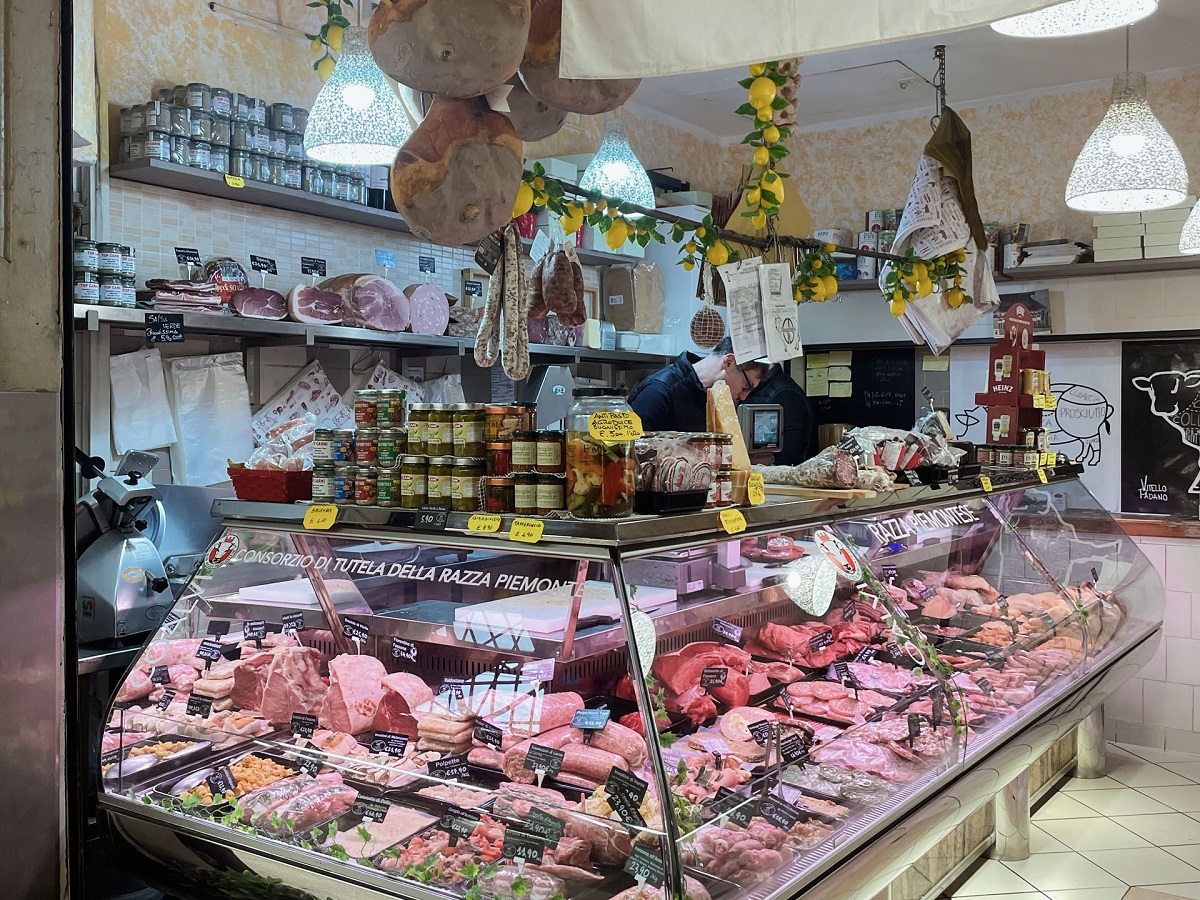
Where to find real mortadella
Since the mortadella import ban was lifted, it’s relatively easy to find genuine mortadella (including Mortadella di Bologna IGP) in the deli cases of upscale US markets—which is good news, because there are still plenty of restrictions on what meat products travelers can bring into the US from Europe.
As a side note: If you’ve heard of modern EU regulations about other foodstuffs—bubbly can only be called “Champagne” if it’s from the Champagne region of France, for instance—then the Cardinal’s 17th-century notice will sound like an early precursor to the EU’s geography-based protection that Mortadella di Bologna has today: protected geographical indication, or PGI [IGP in Italian].
Explore International Cuisine Like a Local
Join one of our top-rated food tours that are offered in many cities throughout the world! With the help of our expert local guides, you’ll get to see, hear, and taste your way through these cities and learn about their fascinating histories and cultures.

